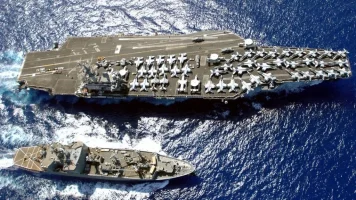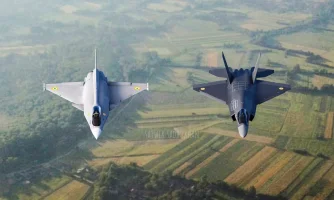- Views: 3K
- Replies: 28
In a move to enhance its amphibious capabilities, the Indian Navy is embarking on a significant project to construct Landing Platform Docks (LPDs) domestically.
This initiative follows a Request for Information (RFI) released in 2021, which has garnered interest from prominent Indian shipyards, including Cochin Shipyards Ltd (CSL) and Garden Reach Shipbuilders & Engineers Ltd (GRSE).
Furthermore, L&T Shipbuilding and Mazagon Dock Shipbuilders Limited (MDL) have also proposed designs based on collaborations with international Original Equipment Manufacturers (OEMs).
These envisioned LPDs will be veritable behemoths, each capable of carrying a crew of 540 sailors and accommodating up to 900 troops. Measuring approximately 200 meters in length and displacing up to 8 meters of water when fully loaded, these vessels are designed for both capacity and endurance.
The Navy desires a cruising speed of 14 to 16 knots, coupled with a remarkable range of 10,000 nautical miles at economical speed, facilitating extended deployments.
A hallmark of the LPDs will be their emphasis on electric propulsion. The RFI mandates an Integrated Full Electric Propulsion or Hybrid Propulsion system, reflecting the Navy’s commitment to modern, environmentally friendly, and efficient technologies.
Far from being passive carriers, these LPDs will pack a offensive punch. The Navy envisions them equipped with 32 Vertical Launch Short Range Surface to Air Missiles (VLSRSAM) for air defence and 16 anti-ship missiles for offensive capabilities.
Additionally, they will feature a Close-In Weapon System (CIWS) with electro-optical fire control, heavy machine guns with stabilized mounts, and medium machine guns. The possibility of incorporating directed energy weapons as a future replacement for CIWS further underscores their cutting-edge nature.
Situational awareness will be paramount, achieved through a comprehensive sensor suite that includes a combined air and surface surveillance radar, a 3D air surveillance radar, a surface surveillance radar, electronic warfare support systems, and an electro-optical/infrared search and track system.
A unique aspect of the design is the "through deck" configuration, essentially transforming these vessels into Landing Helicopter Docks (LHDs). This configuration enables seamless flight operations directly from the hangar to the landing deck.
The envisioned air complement is noteworthy, comprising at least two heavy lift helicopters, 12 special operations helicopters, and two Naval Ship-borne Unmanned Aerial Systems (NSUAS).
The design facilitates simultaneous operations of at least four special operations helicopters, with the potential for NSUAS integration. The hangar will house at least 12 special operations helicopters and two NSUAS, while the deck will provide space for two heavy lift helicopters with folded blades. The design prioritizes flexibility by enabling the operation of heavy lift helicopters from the reinforced forward deck area.
By choosing to build these LPDs domestically, the Indian Navy not only bolsters its amphibious warfare capabilities but also champions the growth of domestic shipbuilding expertise. This project serves as a testament to India's commitment to self-reliance in defence manufacturing and its ambition to become a leading player in the global maritime arena.


